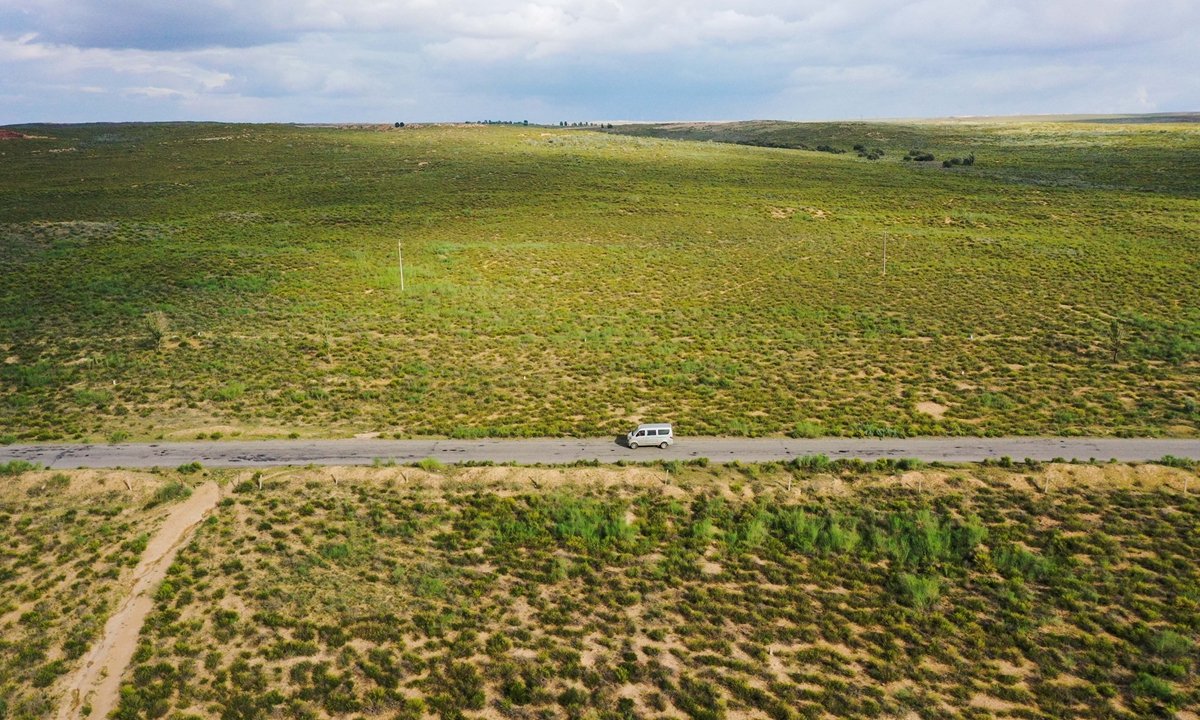The Kubuqi Desert, once dubbed “the sea of death,” has experienced an impressive transformation over the years. Notable figures from around the world, like Bronislaw Komorowski, the former president of Poland, have been witnesses to this transformation, attributing it to China’s innovative desert control measures and its commitment to sustainable development.
Forum Highlights the Future
From August 25 to 27, the Ninth Kubuqi International Desert Forum (KIDF) took place in Ordos, Inner Mongolia. This event stands as the world’s singular large-scale international forum focused on desertification control, offering a platform for experts, leaders, and innovators to discuss solutions to this global challenge.
In an interview with the Global Times, Komorowski shared his observations on the forum, expressing admiration for the progress he saw. Having visited in 2017 for the 6th KIDF, his latest visit further reinforced the advancements in desertification control measures. He emphasized the theme of the forum: “Science and Technology Leads Desert Control, Making Deserts Benefit Mankind,” which resonated with him deeply.
Desert Transformation: A Green Feat
The increasing green areas within the Kubuqi Desert are evident. Previously advancing dozens of meters toward the Yellow River annually, concerted efforts over the decades have brought about impressive results. Today, about a third of the desert is draped in green vegetation. Remote analysis by China’s Ministry of Science and Technology indicates a 65% vegetation cover in the core treatment zone, marking an over 30% increase in a decade.
Komorowski, reflecting on his previous visit, stated, “What unfolded in the Kubuqi Desert epitomizes the potential of technology in battling desertification. China’s strategy, an amalgamation of market orientation and industrialization, has harmoniously married desert prevention with economic growth, elevating local incomes in the process.”
Harnessing New Energy in Desert Control
A standout example of this innovative approach is seen in the efforts of Elion Resources Group. Their Kubuqi Desert Control and Yellow River Protection Project employs an ecological photovoltaic desert control system. The group, aligning with China’s carbon goals, has invested in a 3.2GW three-dimensional photovoltaic desert control project. Concurrently, they’ve developed a green ecological agricultural system. By integrating eco-tourism, and planting under solar panels, the initiative has pulled over 102,000 individuals out of poverty, catalyzing rural rejuvenation.
Komorowski expressed keen interest in such integrative approaches. “China has inspired a paradigm shift, transforming deserts from challenges to opportunities. When managed wisely, these landscapes can become a reservoir of wealth,” he noted.
Global Cooperation Against Desertification
Desertification is a global issue. UN data reveals that it affects approximately 20% of the world’s population, claiming about 50,000-70,000 square kilometers annually, and causing economic damages of up to $42 billion each year. In the past decade, China has significantly contributed to reversing this trend, spearheading sand control and prevention measures across vast stretches of land. These efforts contribute to a staggering 25% of the world’s increase in greenery.
Komorowski underscored China’s broader global contribution, “The expansion of forests in China enriches not just the nation but humanity. China, with its vast expanse and economic might, is aligning with global trends, assuming leadership roles in ecological conservation and collaboration.”
China and Poland: Green Allies
Despite the absence of deserts in Poland, the nation shares an ecological vision with China. Once a significant coal producer and importer in Europe, Poland is transitioning towards greener energy sources. With the backing of the European Union, Poland is investing in new energy sectors, like solar and wind power.
Komorowski emphasized the shared objectives of both nations in green energy development and noted the immense potential for bilateral cooperation in this realm.
Towards a Shared Green Future
The 10th anniversary of China’s vision of a global shared future and the Belt and Road Initiative (BRI) has underscored the nation’s commitment to fostering international dialogue. This aligns with broader international goals, such as the 2030 Agenda.
“China’s achievements in desert management and renewable energy development are earning global acclaim,” Komorowski observed. He expressed optimism that China’s model and collaborative approach would inspire more countries in the future, leading to global benefits.
Read More:
